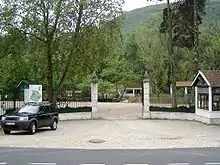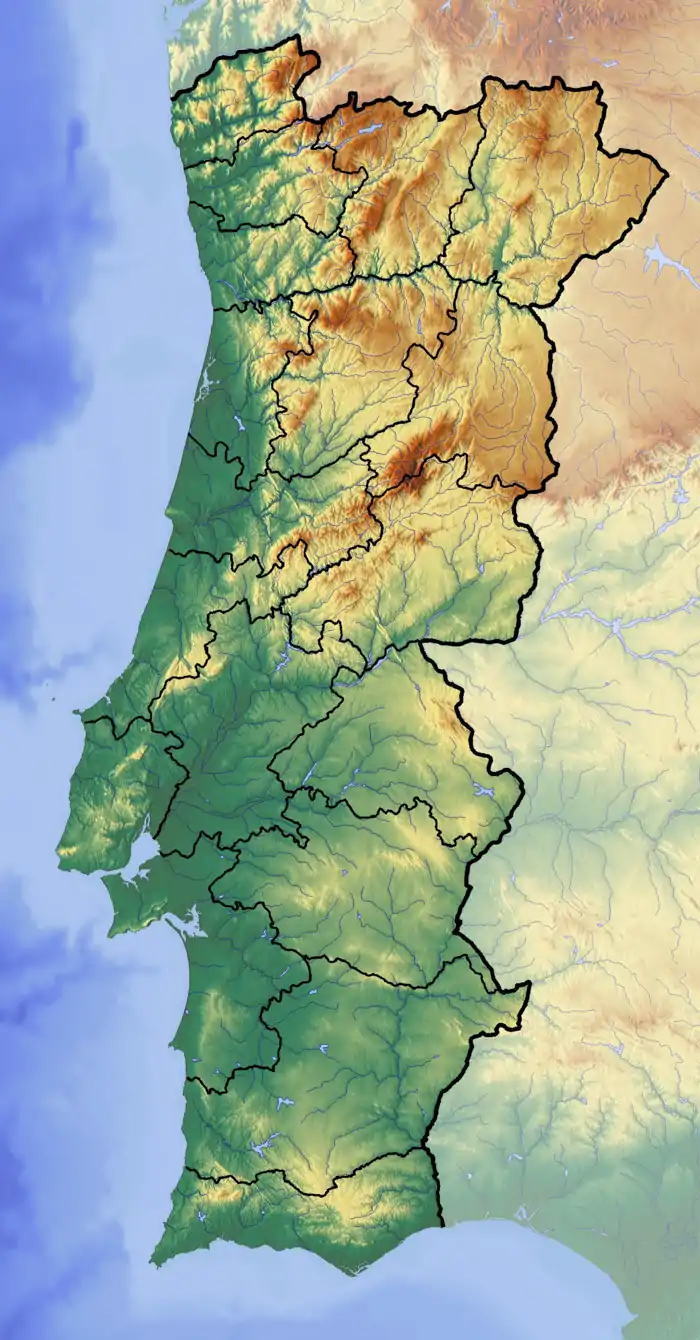Tapada Nacional de Mafra
The Tapada Nacional de Mafra was created in Mafra, Portugal, during the reign of king João V, following the building of the Mafra National Palace, as a park for royal and court recreation.
| UNESCO World Heritage Site | |
|---|---|
 Porta do Codeçal, the main entrance | |
| Location | Portugal |
| Criteria | Cultural: (iv) |
| Reference | 1573 |
| Inscription | 2019 (43rd session) |
| Area | 1,213.17 ha (2,997.8 acres) |
| Buffer zone | 693.239 ha (1,713.03 acres) |
| Coordinates | 38°57′10″N 9°17′48″W |
 Location of Tapada Nacional de Mafra in Portugal | |

Covering over 8 square kilometres, the park holds different species of deer, wild boar, foxes, birds of prey and many others coexisting in an unusually rich and diversified natural habitat. A favourite of the Portuguese monarchy for hunting and other leisure pursuits, the Tapada de Mafra took on a noble connotation that has done much to aid its preservation and continuity.
Its natural heritage ensures it is an excellent location for fun environmental awareness and education programmes. The Tapada is also open for walking, mountain biking, horse riding, archery and crossbow shooting activities.
On 7 July 2019, the Royal Building of Mafra – Palace, Basilica, Convent, Cerco Garden and Hunting Park (Tapada) was inscribed as a UNESCO World Heritage Site.[1]
References
- "Six cultural sites added to UNESCO's World Heritage List". UNESCO. 7 July 2019.